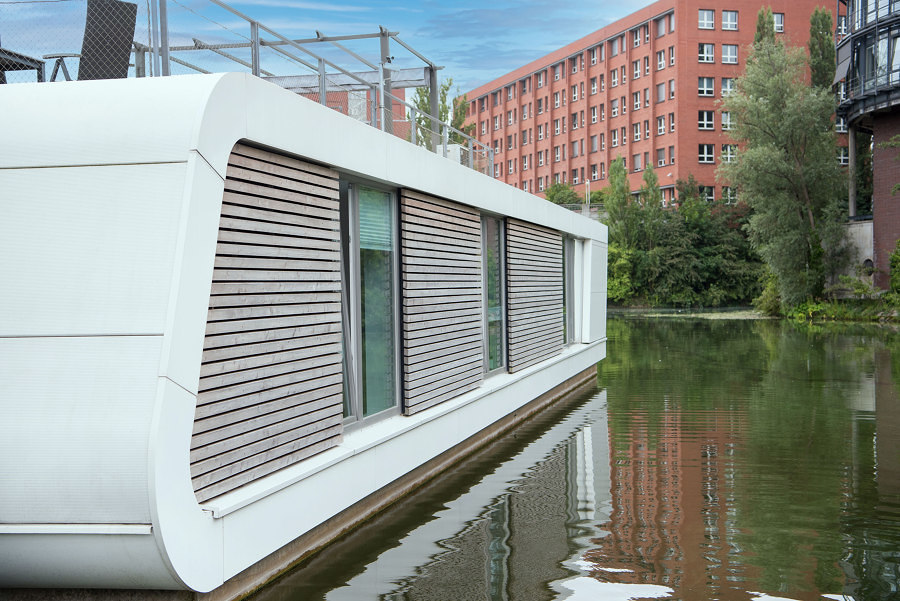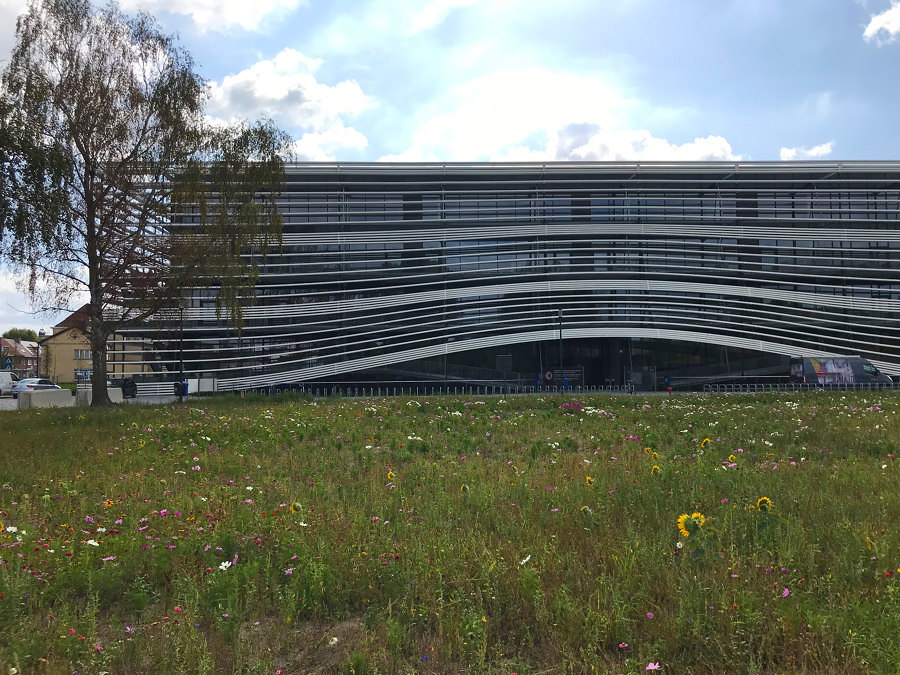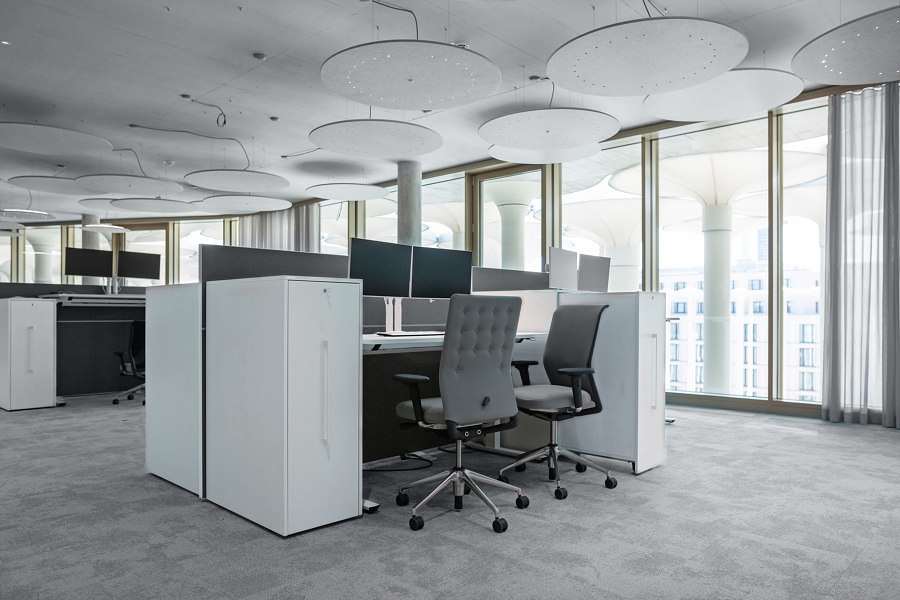Sustainability in the office – PALMBERG intelligence series
Brand story by Helen Parton
Schönberg, Germany
26.01.22
How do we work in the 21st century? Or how should we work? One short answer is, of course, sustainably. In this latest installment of the PALMBERG intelligence series – sponsored by the leading German office-furniture manufacturer – London-based design and sustainability expert Helen Parton explores the contemporary workscape, from choosing the right chair to zero-energy buildings.
The NEOGY Floating Homes at Hamburg's Victoriakai make use of urban space without sealing it. Retailer: Philipp Bürokultur. Photo: Fotowerker

The NEOGY Floating Homes at Hamburg's Victoriakai make use of urban space without sealing it. Retailer: Philipp Bürokultur. Photo: Fotowerker
×While at first glance the mismatched chairs, ancient workstations from a well-known Scandinavian furniture giant and plethora of spider plants that make up my office of freelance journalists might not seem the most cutting edge, actually, could it give the world of workplace a lesson in sustainability?
Those chairs would otherwise have ended up in landfill, the desks have seen us through half a dozen office moves and the plants are as on-trend as the colour Very Peri, cluttercore interiors or Y2K nostalgia. Not that sustainability in the office should be seen as a trend, you’ll understand, but a very real need to make a difference in light of the climate emergency.
The Floating Homes community offers a lively, thriving and exclusive new way of living and working. Stockist: Philipp Bürokultur. Photos: Fotowerker
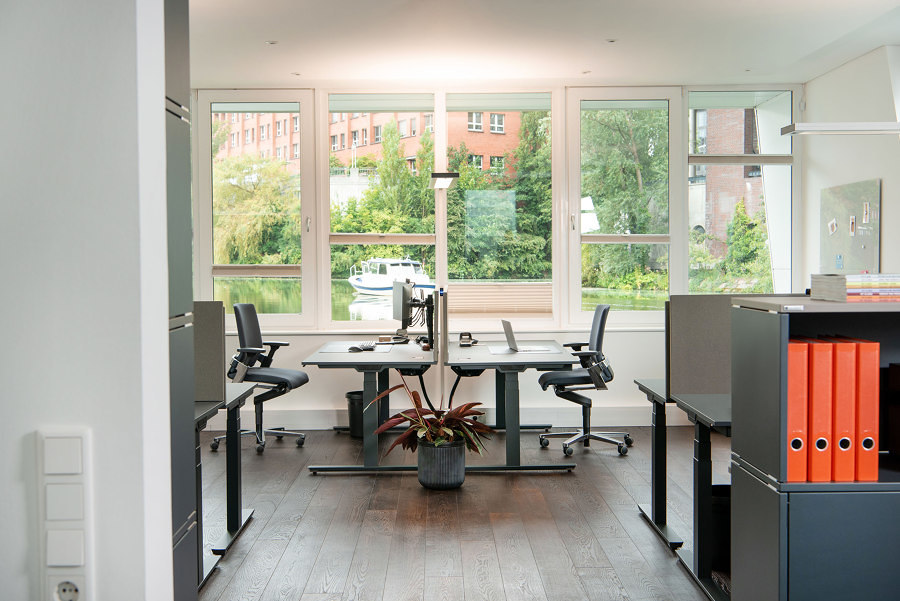
The Floating Homes community offers a lively, thriving and exclusive new way of living and working. Stockist: Philipp Bürokultur. Photos: Fotowerker
×And it seems that the corporate office world is finally beginning to take notice. The 2021 edition of the Sustainable Building Market Study – which maps the views of nearly 700 Nordic-, UK- and German-based stakeholders in the property industry – reported that 90 per cent of those questioned cited sustainability as important for a successful business operation, with over two-thirds viewing net-zero carbon buildings as a strategic business priority.
Helen Parton is an architecture and interiors journalist with over 15 years’ experience, who specialises in writing about how design can make people happier and more productive at work

Helen Parton is an architecture and interiors journalist with over 15 years’ experience, who specialises in writing about how design can make people happier and more productive at work
×How to cut through the greenwash though? Well, literally getting under the skin of a building is one way to tell how serious its sustainability credentials are. Effective heating, cooling and ventilation might not have the same sexy visibility as cycle racks and showers in the basement or reducing single-use plastic and introducing vegan options in the staff canteen, but they can be one of the most effective ways to limit the building’s carbon footprint. New builds such as HOGENT have engineered elements such as a permeable shading membrane to cleverly conserve energy.
Well, literally getting under the skin of a building is one way to tell how serious its sustainability credentials are
While not decrying those aforementioned spider plants, office greenery has also come a long way from the occasional pot plant, from statement succulents dividing desks to green walls in receptions which improve the aesthetics as well as the air quality of the office environment. Some even argue extensive greenery is easing the transition from wfh to the return to the office, being a visual reminder of the houseplants at home.
In the new Faculty of Social Sciences at Ghent University HOGENT, materials such as a permeable solar control membranes are used to intelligently save energy. Retailer: Forum Office. Photos: Sarah Blee
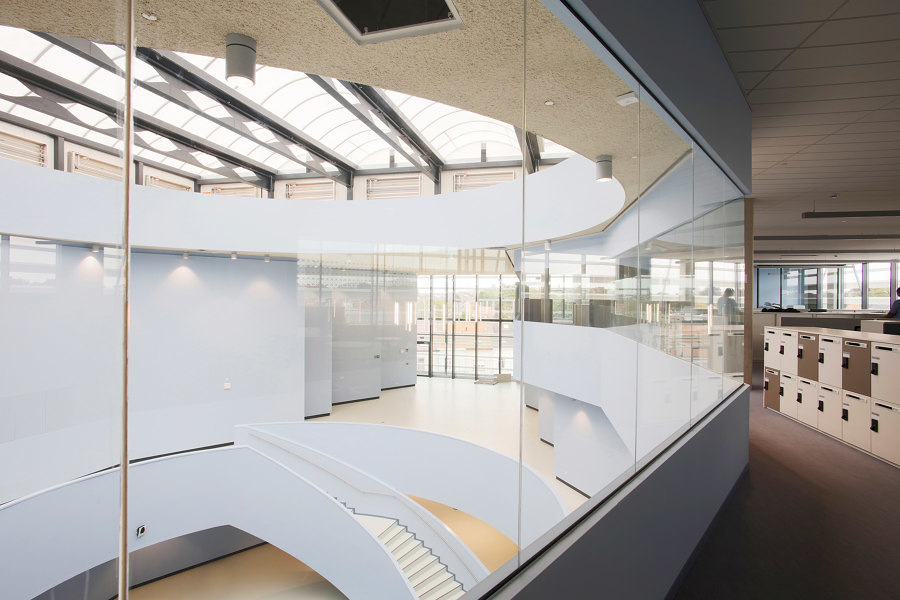
In the new Faculty of Social Sciences at Ghent University HOGENT, materials such as a permeable solar control membranes are used to intelligently save energy. Retailer: Forum Office. Photos: Sarah Blee
×Increased planting could improve the diets of office workers, too. Vertical farming, where leafy vegetables and herbs can be harvested as well as admired, is proving a small but increasingly popular part of blue-chip firms’ commitment to achieving their Environment, Social and Governance (ESG) targets. These are often found on rooftops, which have become as covetable as a corner office once was. But instead of being limited to the C-suite, outside space is now an intrinsic part of democratising new office buildings which colleagues, visitors and the community gets to enjoy.
But what of existing structures? Of those same senior European and Nordic decision-makers surveyed, 80 per cent say renovating buildings is more important than designing new ones to achieve carbon neutrality. There are a raft of retrofit measures, from inserting a new staircase, opening up entrances to create a double-height atrium and extending previously unloved elements of the building envelope to make old offices fit for present and future use.
SAB Leipzig: Architectural firm acme used 159 columns for the project. While symbolically stabilising the bank, the columns also provide drainage for the roof. Concept and realisation: Deutsche Werkstätten. Photos: Strohhut Pictures, Leipzig
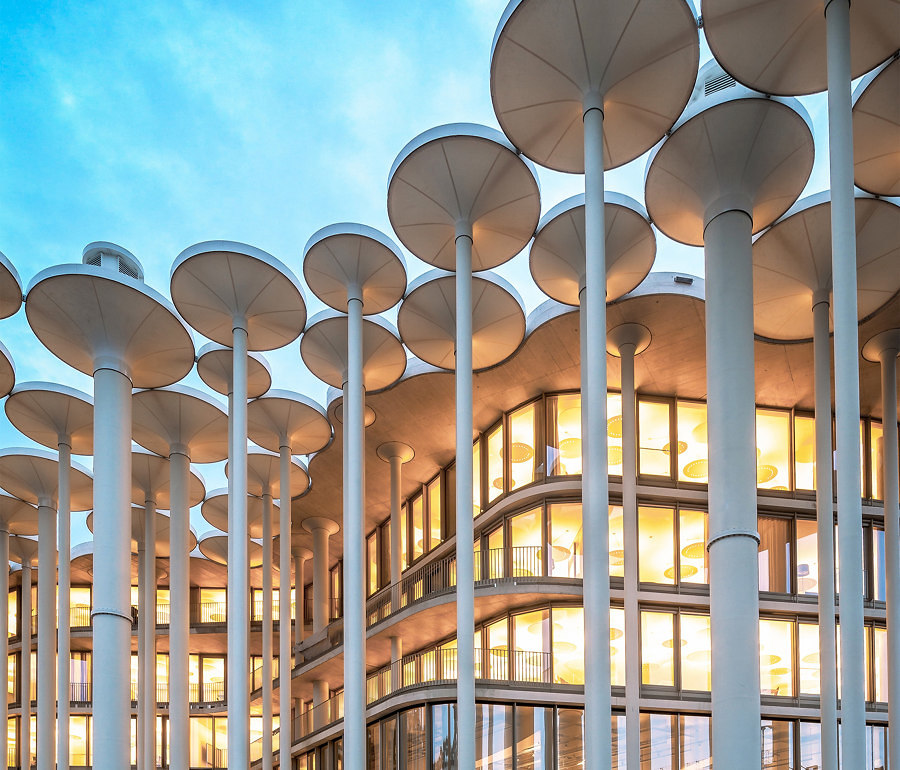
SAB Leipzig: Architectural firm acme used 159 columns for the project. While symbolically stabilising the bank, the columns also provide drainage for the roof. Concept and realisation: Deutsche Werkstätten. Photos: Strohhut Pictures, Leipzig
×And what of the fixtures and fittings? Those responsible for choosing the lighting, flooring and furniture are rightfully questioning the whole life cycle of these products, from production to travel miles to their destination. To give developers, manufacturers and buyers the necessary reassurance, PALMBERG shows its commitment to sustainability through their LEVEL certification – product labels that detail compliance with environmental, social and economic standards throughout the supply chain.’
As all stakeholders involved in the designing, building and indeed occupying of a workplace become aware of what makes an office sustainable – from the materials that make up the building’s fabric to the chair you sit on to your choice of commute – so the drive towards net zero buildings can continue apace.
© Architonic




